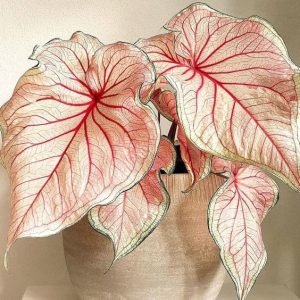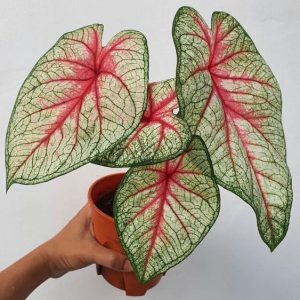- English
- Chinese
- French
- German
- Portuguese
- Spanish
- Russian
- Japanese
- Korean
- Arabic
- Irish
- Greek
- Turkish
- Italian
- Danish
- Romanian
- Indonesian
- Czech
- Afrikaans
- Swedish
- Polish
- Basque
- Catalan
- Esperanto
- Hindi
- Lao
- Albanian
- Amharic
- Armenian
- Azerbaijani
- Belarusian
- Bengali
- Bosnian
- Bulgarian
- Cebuano
- Chichewa
- Corsican
- Croatian
- Dutch
- Estonian
- Filipino
- Finnish
- Frisian
- Galician
- Georgian
- Gujarati
- Haitian
- Hausa
- Hawaiian
- Hebrew
- Hmong
- Hungarian
- Icelandic
- Javanese
- Kannada
- Kazakh
- Khmer
- Kurdish
- Kyrgyz
- Latin
- Latvian
- Lithuanian
- Luxembou..
- Macedonian
- Malagasy
- Malay
- Malayalam
- Maltese
- Maori
- Marathi
- Mongolian
- Burmese
- Nepali
- Norwegian
- Pashto
- Persian
- Punjabi
- Serbian
- Sesotho
- Sinhala
- Slovak
- Slovenian
- Somali
- Samoan
- Scots Gaelic
- Shona
- Sindhi
- Sundanese
- Swahili
- Tajik
- Tamil
- Telugu
- Thai
- Ukrainian
- Urdu
- Uzbek
- Vietnamese
- Welsh
- Xhosa
- Yiddish
- Yoruba
- Zulu
- Kinyarwanda
- Tatar
- Oriya
- Turkmen
- Uyghur

Osisi Orangomental kwuru maka akwụkwọ doro anya ha gụnyere, na-akpọkarị kaladium na caladium na agba mara mma. Ọtụtụ ndị na-enwe mmasị na caladium na-asọ asọ n'ihi ụrọ a na-acha na nke ahịhịa na ụdị ya. Akwukwo caladium Agba dịgasị iche iche na oge n'ọtụtụ ụzọ, gụnyere Ghọshọnụ, mgbanwe gburugburu, na ọnọdụ gburugburu.

Calatium
Na-agba akwụkwọ
A na-ama ama nke ọma na agba akwụkwọ ndụ akwụkwọ ndụ, na-acha ọcha, pink, ọbara ọbara, na-acha odo odo na-acha akwụkwọ. Akwụkwọ ndị ahụ nwere ụdị dịgasị iche iche; Havefọdụ mma agha na ndị ọzọ dị ka obi bara ụba. Caladium bụ akụrụngwa dị mkpa na ịkọ ugbo n'ihi ụdị agba na ụdị ya. Site na kenha nwere ọgụgụ isi, agba nke epupụta abụghị naanị ihe metụtara ime ụlọ na n'èzí kamakwa na ọnọdụ dị iche iche.
Caladium leaf color’s forming method
Interplation nke pigments gụnyere carotenoids, andymocyanin, na chlorophyll na-ekpebi agba agba nke akwụkwọ caladium. Green, andymocyanin na-enyeghị akwụkwọ na-acha ọbara ọbara, pink, odo odo, wdg.; carotenids na-ebute ọkwa na mmanụ oroma; Chlorophyll bụ ihe na-acha akwụkwọ ndụ akwụkwọ ndụ. Agba kachasị nke akwụkwọ caladium na-adabere na ịta na nkesa nke ọtụtụ agba na epupụta.
Ihe mejupụtara mkpụrụ ndụ ihe nketa na-ekpebi agba nke akwụkwọ; Yabụ, ụdị caladium dị iche iche ga-egosipụta ngwakọta na usoro dị iche iche. Agba ejiji nwere ike imetụta oke gburugburu ebe obibi, ọdịiche nke oge oge, oke ọkụ, oke okpomọkụ na ọnọdụ ala.
Ọ bụrụ na oge a na-emetụta agba nke akwụkwọ caladium
While the colour of caladium leaves may vary with the seasons, this shift is not as clear-cut and frequent as that of certain other plants’ fall leaf colour change. Colour changes mostly in line with the following seasonal influences:
Light modulates
A na-emetụta agba akwụkwọ siri ike site na ọkụ. Akwụkwọ a na-acha akwụkwọ na-achakarị na mmiri na ọkọchị mgbe ọkụ na-akawanye elu. Ìhè zuru oke na-enyere chlorophyll ka ọ sị na, ebe ahụ na-echebe akụkụ akwụkwọ ndụ akwụkwọ ndụ nke akwụkwọ. N'otu oge, ọkụ nwere ike ime ka arụmọrụ antheryanins mee ihe, si otú a na-agbawa uhie na-acha ọbara ọbara, odo odo, na akụkụ pink.
But in fall and winter, when daylight hours shrink and light intensity declines, the caladium’s leaves could seem somewhat drab. This is so because inadequate light would reduce chlorophyll, which would fade the green portion and impact the performance of anthocyanins, therefore lightening the tone of the red and purple regions.
Ọdịiche na okpomọkụ
Caladium nwere mmasị na gburugburu na-ekpo ọkụ; Ọnọdụ okpomọkụ kwesịrị ekwesị na-ada n'etiti 18 Celsius C na 30 Celsius C. A na-emetụta agba akwụkwọ na-emetụta mgbanwe ọnọdụ okpomọkụ. Akwụkwọ caladium nwere ike inwe agba siri ike n'oge ọkọchị mgbe ọnọdụ okpomọkụ dị elu. A na-ejikọ njikọta nke epupụta na mmepe nke caladium na-emegharị mgbe okpomọkụ dị ala na udu mmiri na udu mmiri, ya mere mbelata nke agba na oge ọkọchị.
Caladium may become dormant if the temperature is too low, particularly below 10°C, at which point the leaves’ colour may become dull or maybe totally faded. Low temperatures at the same time might also lead to browning or drying of the leaf margins, therefore drastically altering the leaves’ whole look.
iru mmiri na mmiri mmiri
Caladium chọrọ iru mmiri dị elu, karịsịa n'oge uto uto kachasị elu; N'ihi ya, ekwesịrị idobe iru mmiri ikuku n'elu 60%. A na-echekwa agba mara mma nke akwụkwọ ya gburugburu iru mmiri dị elu. Na epupụta nwere ike ịmịcha ma kpochapụ n'ọnọdụ nke iru mmiri na-ezughị ezu ma ọ bụ nnyefe mmiri na-egbu oge. Ọ na - akakarị na ọdịda na n'oge oyi, ikuku ikuku dị ala karị na sistemụ kpo oku, nke ga - eme ka caladium doo ikuku.
Ọzọkwa na-emetụta agba akwụkwọ nwere ike ịbụ nke erughị eru ma ọ bụ nke ukwuu. Ọ bụ ezie na obere mmiri nwere ike ibute akwụkwọ iji kpọnwụọ na agba ruo na-acha, mịrị amị nwere ike iduga mgbọrọgwụ na agba.
Nri na ala ala
Karịsịa n'oge uto, a na-achọwa caladium nke ukwuu mgbe ọ dịịrị mineral. Nri zuru oke gụnyere nitrogen, phospholous, na potassium na-enyere ndị aka ịnọgide na-adị mma na agba. Ma ọdịda na udu mmiri, mbelata nke mmepe nke osisi na-akpata ihe na-adịghị mkpa maka nri. Fatịlaịza ọ ga-aga n'ihu na oge ọkọchị, ọ nwere ike ibute ịta nchara dị elu na ala, yabụ na-emetụta agba na ọnọdụ akwụkwọ.
N'otu oge, ọdịiche na-agbanwe n'ime ala ga-emetụta ụcha nke akwụkwọ caladium. Ọ bụ ezie na ala alkaline nwere ike igbochi ngosipụta nke antheryanins ma mee ka epupụta ọkụ, ala acidic na-adị mma maka njikọta nke anthocyanins, yabụ ịkwalite mpaghara uhie na odo nke akwụkwọ.
Mmetụta nke mgbanwe n'ụdị dị iche iche na mpempe akwụkwọ na-agbanwe
Apart from the seasonal variations, some types of caladium also exhibit notable variations in leaf colour changes. While some types’ leaf colour varies significantly between seasons, others rarely changes during the growing season. For instance, some types exhibit brilliant red in summer, but in winter the leaves could become pale pink or green.
Ihe okike mkpụrụ ndụ ihe nketa na-emetụta ihe ịtụnanya a. Verdị dịgasị iche iche na-emeghachi omume dị iche iche na ọkụ, ọnọdụ nke nri, nke na-emepụta ọnụego nke mmepụta na ndakpọ dị iche iche na agba agba.
Olee otú ọnọdụ isi akụ esi emetụta agụ akwụkwọ?
Caladium’s leaf colour is not only influenced by seasonal elements but also somewhat closely by growing circumstances. The expression of leaf colour will be directly influenced by the temperature, humidity, light, soil conditions, fertilisation of the farming surroundings. It is essential to modify the farming circumstances in time in line with seasonal fluctuations if one wants the leaves of caladium brilliant. For instance, appropriate shade is required in summer to prevent intense light burning the leaves; in autumn and winter, light and humidity must be raised to offset the absence of environmental conditions.
Site na ịgbanwe ike ọkụ, na-esiwanye elu iru mmiri na inyefe akwụkwọ nri, mmadụ nwere ike ichekwa mpempe akwụkwọ calamus mara mma. Ọzọkwa ị ga - enyere iji chekwaa agba akwụkwọ na - ugboro ugboro nke ala, nhicha akwụkwọ nwụrụ anwụ, ma na - edebe gburugburu ventinial ike.
The seasons affect the leaf colour of the vibrant calamus; these variations are mostly mirrored in elements like light, temperature, humidity, and water availability. Though the leaf colour of the colourful calamus varies in various seasons, this variation is not as clear as that of certain deciduous plants. The colourful calamus’s leaf colour is often brighter in spring and summer as the surroundings with enough light, appropriate temperature, and high humidity help to synthesise and express the colours. The leaf colour of the colourful calamus may seem somewhat dreary in fall and winter when the light declines, therefore lowering the temperature and the humidity.

Caldium na-acha odo odo na-acha odo odo
A ga-emerịrị mgbanwe mgbanwe ndị kwekọrọ dịka ọdịiche dị na ọnọdụ ihu igwe n'ọtụtụ oge iji chekwaa agba nke akwụkwọ calamus agba. A na-ahụ nke ọma calatium Enwere ike idobe akwụkwọ na njikwa ọkụ sayensị, njikwa okpomọkụ na oke iru mmiri, yana usoro ọrụ ugbo kwesịrị ekwesị, yabụ na-eme ka mmetụta ịchọ mma mara mma n'ọtụtụ oge.
Previous News
Philodedron Vine Kwesịrị ekwesị maka idobe ime ụlọNext News
Optimal light conditions for hybrids of Caladiu...


